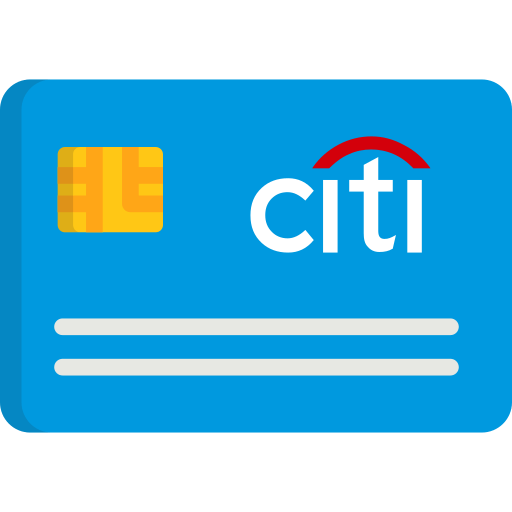The bank statement also includes a debit memorandum describing a $253 automatic withdrawal for a utility payment. On the bank reconciliation, add unrecorded automatic deposits to the company’s book balance, and subtract unrecorded automatic withdrawals. One of the bank reconciliation journal entries is the adjusting entry made to correct an error made by the company or bank. Sometimes, errors can be made by companies and banks, thus, every transaction on the bank statement and books should be checked thoroughly. If a bank made an error while recording a transaction, the bank has to be notified, and in a bank reconciliation, the bank balance has to be adjusted to show this.
Suppose you issued a check for $500 (not yet recorded in your own book), which has not yet been cleared by the bank. Next, look for any outstanding checks, which are checks issued but not yet cleared by the bank. However, you typically only have a limited period, such as 30 days from the statement date, to catch and request correction of errors. However, in practice there exist differences between the two balances and we need to identify the underlying reasons for such differences. You will know about such information only when you receive the bank statement at the end of the month. Your bank may collect interest and dividends on your behalf and credit such an amount to your bank account.
Bank Recon Club is a place where students, bookkeepers, accountants, and business owners share what they know. You come to know about such deductions only when you receive the statement from the bank. However, there can be situations where your business has overdrafts at the bank. The Ascent is a Motley Fool service that rates and reviews essential products for your everyday money matters. I started my career in television sales where I worked with small businesses and regional agencies. I was a commercial property & casualty agent specializing in small business.
From the following particulars of Zen Enterprises, prepare a bank reconciliation statement as of December 31, 2021. One of the primary reasons responsible for such a difference is the time gap in recording the transactions of either payments or receipts. This is also known as unfavorable balance as per the cash book or unfavorable balance as per the passbook. Since the Adjusted balance per BANK of $1,719 is equal to Adjusted balance per BOOKS of $1,719, the bank statement of June 30 has been reconciled.
Typical Bank Reconciliation Journal Entries
If you want to prepare a bank reconciliation statement using either of these approaches, you can take balance as per the cash book or balance as per the passbook as your starting point. For each of the adjustments shown on the Balance per BOOKS side of the bank reconciliation, a journal
entry is required. Each journal entry will affect at least two accounts, one of which is the company’s
general ledger Cash account.
When preparing a bank reconciliation statement, a journal entry is prepared to account for fees deducted. You receive a bank statement, typically at the end of each month, from the bank. The statement itemizes the cash and other deposits made into the checking account of the business. chamber of commerce quotes The statement also includes bank charges such as for account servicing fees. Now, while reconciling your books of accounts with the bank statements at the end of the accounting period, you might observe certain differences between bank statements and ledger accounts.
- On the other hand, if an item is subtracted, the checking account is credited.
- To the bank, however, a company’s checking account balance is a liability rather than an asset.
- In addition to this, the interest or dividends earned on investments is directly deposited into your bank account after a specific period of time.
The bank transactions are imported automatically allowing you to match and categorize a large number of transactions at the click of a button. This makes the bank reconciliation process efficient and controllable. Before the reconciliation process, business should ensure that they have recorded all transactions up to the end of your bank statement.
We reference each entry as E, F, B, D, G, C, or K, as indicated on the right side of the bank reconciliation. Your bank reconciliation form can be as simple or as detailed as you like. For example, your bank statement shows that your ending balance is $11,450, while your G/L balance according to your trial balance is $10,850. Bank reconciliations are like a fail-safe for making sure your accounts receivable never get out of control. And if you’re consistently seeing a discrepancy in accounts receivable between your balance sheet and your bank, you know you have a deeper issue to fix.
Step #1: Match Each Item On the Bank Statement With Every Item in Your Company’s Cash Account
He has worked as an accountant and consultant for more than 25 years and has built financial models for all types of industries. He has been the CFO or controller of both small and medium sized companies and has run small businesses of his own. He has been a manager and an auditor with Deloitte, a big 4 accountancy firm, and holds a degree from Loughborough University.
When you record the reconciliation, you only record the change to the balance in your books. The change to the balance in your bank account will happen “naturally”—once the bank processes the outstanding transactions. This will ensure your unreconciled bank statements don’t pile up into an intimidating, time-consuming task.
Automatic deposits occur when the company’s checking account receives automatic fund transfers from customers or other sources or when the bank collects notes receivable payments on behalf of the company. One reason for this is that your bank may have service charges or bank fees for things like too many withdrawals or overdrafts. Or there may be a delay when transferring money from one account to another.
Double Entry Bookkeeping
Therefore, a $345 debit is made to increase the accounts receivable balance of Hosta, Inc., and a $345 credit is made to decrease cash. The bank reconciliation is an internal document prepared by the company that owns the checking account. The second item was a $3,000 credit (deposit) that the bank showed in our account that we had no idea was there. They kept $500 as a fee for doing that work for us and put $3,000 in our account. The debt to us on our books was recorded as a note receivable (which we will study later).
Bank errors are mistakes made by the bank while creating the bank statement. Common errors include entering an incorrect amount or omitting an amount from the bank statement. Compare the cash account’s general ledger to the bank statement to spot the errors. To reconcile a bank statement, the account balance as reported by the bank is compared to the general ledger of a business. Finally, when all such adjustments are made to the books of accounts, the balance as per the cash book must match that of the passbook. There are times when the bank may charge a fee for maintaining your account.
In this case, the journal entries depend upon the type of error found. These checks will also need to be considered during the reconciliation process. Bank reconciliation helps to identify errors that can affect estimated tax payments and financial reporting. Such cheques are the ones that have been issued by your business, but the recipient has not presented them to the bank for the collection of payment.
COMPARE THE DEPOSITS
To prevent collusion among employees, the person who reconciles the bank account should not be involved in the cash disbursement cycle. Also, the bank should mail the statement directly to the person who reconciles the bank account each month. Sending the statement directly limits the number of employees who would have an opportunity to tamper with the statement.
On the other hand, a small online store—one that has days when there are no new transactions at all—could reconcile on a weekly or monthly basis. When they draw money from your account to pay for a business expense, they could take more than they record on the books. Reconciling your bank statements lets you see the relationship between when money enters your business and when it enters your bank account, and plan how you collect and spend money accordingly.
Nowadays, many companies use specialized accounting software in bank reconciliation to reduce the amount of work and adjustments required and to enable real-time updates. The bank fee is an expense (cost of doing business) and an expense is shown by an entry on the left side of a ledger (because it decreases our equity), meaning the checking account was decreased as well. Suppose your adjusted balance per your books is $10,000, while the ending balance in your bank statement is $9,800. Compare the adjusted balance from your books with the ending balance shown on your bank statement. You will need to adjust for these timing differences during the bank reconciliation process.





